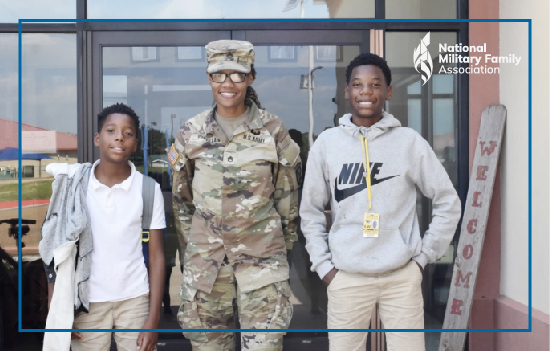What Military Families Need to Know About High School Stabilization

Did you know military kids can attend up to nine different schools while growing up in a military family? That’s a lot of new faces, friends to make, and school mascots to remember. Military life often means picking up and starting over, but the high school years tend to bring a unique set of challenges for military-connected teens.
The High School Stabilization Program may be the answer for families hoping to give their teens some consistency during this critical time.
What is the High School Stabilization Program?
The High School Stabilization Program allows active-duty families to remain at their current duty station while their teen finishes junior or senior year. If approved, the service member’s assignment is deferred or extended so their child doesn’t have to change schools during a crucial academic and social time.
Each service branch runs the program differently, and not every request is approved. But when timing and paperwork align, it can make a huge difference in a teen’s high school experience.
Timing Is Everything
Antoinette Walker, a School Liaison Officer (SLO) at Joint Base Lewis-McChord, says timing is one of the biggest hurdles.
“Soldiers should apply between March 1 of the student’s freshman year and the start of sophomore year,” she explained. “Requests submitted later need extra documentation and are considered exceptions to policy.”
She stressed that families often miss the window because they don’t know the process—or even that the program exists. “It’s all about planning early.”
For example, in the Army, if your child is set to graduate in 2028, the stabilization request should be submitted between March and September of 2025.
The Benefits of High School Stabilization
For military teens who get to stay with their peers through graduation, the results are meaningful.
“It makes a difference when teens don’t have to start over their junior or senior year,” Antoinette shared. “Those who can graduate with friends and classmates they know often have a more successful and happy senior year.”
NMFA’s Bloom teens agree and share about this very topic in their blogs and social platforms. With themes like the bittersweet reality of high school and disregarded aspects of a PCS, their insight is invaluable to understanding how we can better advocate for their school experiences.
Terri Williams, a School Liaison Program Manager at Little Rock Air Force Base, understands that families need flexibility and has seen the high school stabilization program bring peace of mind.
“All of the cases I’ve worked with had positive outcomes,” she said. “Even when stabilization wasn’t possible, schools often found creative solutions—like early graduation or allowing students to return and walk with their class.”
Tips from the Experts
Both SLOs emphasized the importance of communication and encouraged families to contact their offices early, saying, “Know the timeline and get the process going. Don’t wait!”
As central points of contact for all-school-related matters for military families, SLOs are an invaluable resource. They know the local schools, the military policies, and how to guide families through stabilization requests.
You can find the SLO in your area through this Military OneSource directory. Some have dedicated Facebook pages and general information email addresses to make contact easier.
Military Kids Serve Too®
Military kids serve too®—facing frequent moves, changing schools, and starting over time and again. They sacrifice and remain resilient alongside their service member parent, and they deserve support and stability during one of life’s biggest transitions. Whether it’s walking across the graduation stage with friends or finishing a season with their sports team, that stability matters. High School Stabilization Programs may not solve every challenge, but for some families, it’s the key to a smoother path forward.
Connect with your School Liaison today to learn more and start planning ahead.
By: Angela Sablan Tenorio, Content Manager




